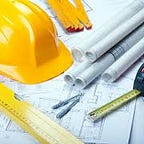Creating digital dig boards with drone imagery and GIS
The last half-decade or so has been a transformative one in the construction industry as it continues to embrace new technology and methodology at a rapid pace.
After continuous realizations that the industry as a whole is much less efficient than it should be considering its size and impact on the entire world, the shifts have been quick and substantial.
Just a few years ago much of the technology that is now commonplace on many job sites was little more than theoretical, and while there is still room to grow the industry and its workers are showing an appetite for adaptation.
Brasfield & Gorrie is one of the largest construction firms in the United States, based in the Southeast and handling major projects throughout the region and beyond for everything from entertainment venues, healthcare, education and more.
Read More: BIM and GIS Integration
Unsurprisingly given their place in the industry, they have also been more than willing to adapt new technology to ensure they are completing their projects as well and efficiently as possible.
Recently, Ryan Hittie and Kyle Duncan, both of whom work in Brasfield & Gorrie’s Innovation Department, took some time to speak with Geo Week News. In the conversation, the duo discussed how their implementing new technology — specifically drone imagery along with GIS-aided “digital dig boards” of job sites — into their projects, what that’s added to their work, and some other tools they’re working on for the future.
A look at the modern construction workflow
Hittie and Duncan work with the drone and GIS programs, respectively, and as they tell it their work certainly coincides and complements each other to provide crucial, accurate, and easy-to-use information to those in the field. Hittie describes the traditional workflow with drone mapping, which has evolved over the years from the firm having just one drone in 2017 to having 38 drones on different job sites by the end of this year. Traditionally, he says, they would fly the drone over the site and overlay the map of underground assets over the drone map.
That led to some new challenges, though, as they collected more and more data. He said, “That was great until we realized we’re getting more data, and every week this map looks different. This pile of lumber is here, but not on this dig board, so we’re going to have to print another dig board and that’s cost prohibitive and not logistically feasible to print a six-by-six dig board every week.”
That’s where Duncan’s work on the GIS side came in to help solve the issue, working with Esri tools. “We brought in Esri as a GIS platform to be able to remove the paper mill, if you will, from the project, using Site Scan as one example.”
Using Site Scan, they were able to take the drone imagery and overlay that with CAD files collected from their contract documents or field engineers on-site, and have that oriented correctly to have that accurate depiction of the site.
Duncan compared that to using satellite imagery, which may be significantly older and thus not as accurate, or even have issues like cloud covering which are not a problem with the drone imagery.
Making everything as simple as possible
When talking about implementing new technology into construction workflows, it’s one thing for the company to broadly talk about implementing these tools and the ways it can enhance projects.
It’s an entirely different and more complex discussion, however, when talking about the actual implementation for those in the field.
There is a reputation for the industry being stubborn in taking these steps, and while some of that is unfair there is at least some element of truth to that. B&G recognized this, and both Hittie and Duncan emphasized the need for simplicity in making this “digital dig board” technology work. Source
